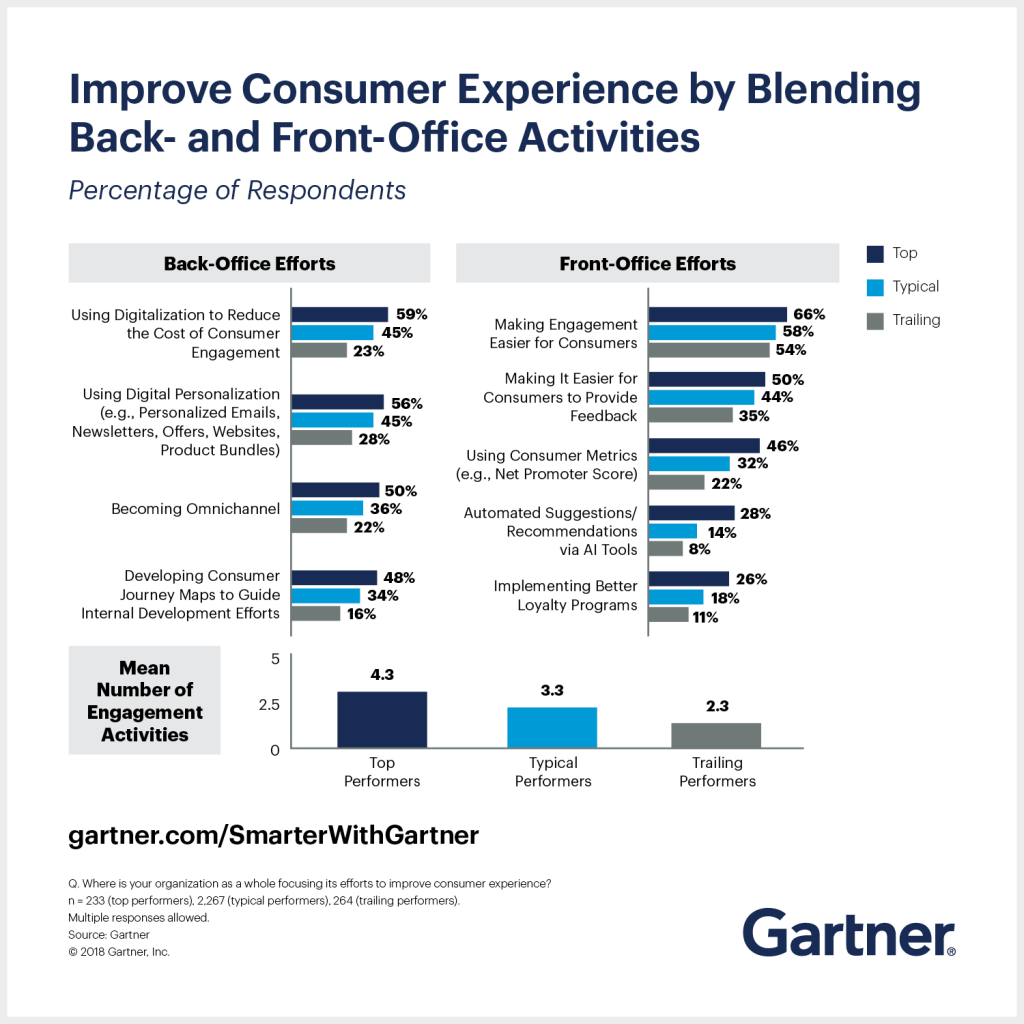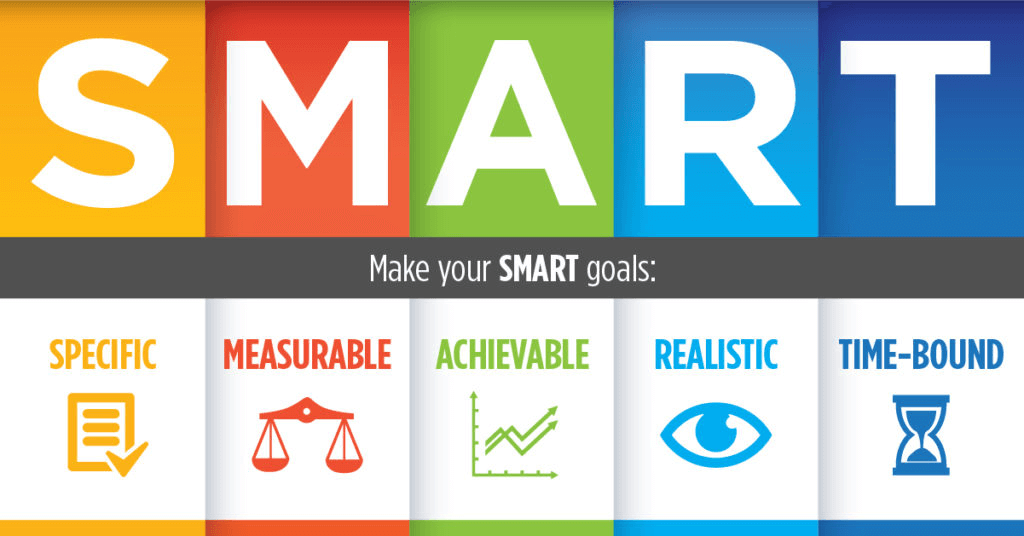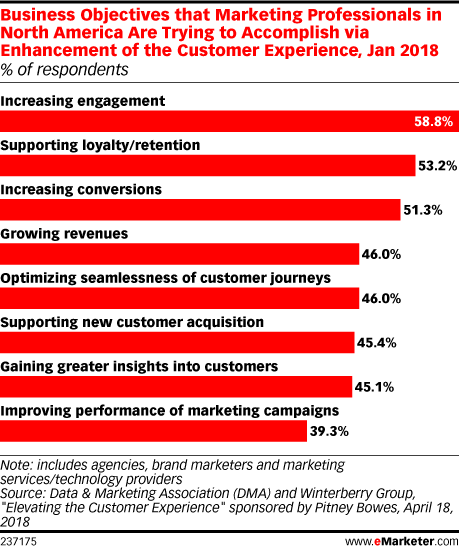Why do you need a solid CRM strategy to dominate your niche?
The right CRM strategy helps you convert leads, boost sales, and skyrocket growth.
Consumers have many options, and you need to compete to win over customers and operate your business effectively.
In this step-by-step guide, we’ll cover everything you need to know about crafting a solid CRM strategy.
- Define Your Goals
- Find and Record Your Baseline
- Fine-Tune Your Customer Segments
- Document Your Customer Journey
- Put All the Pieces Together
- Create Your CRM Strategy
- Find the Best CRM Software
- Share Your Strategy With Your Team and Launch It
- Make Adjustments and Create SOPs
- Review & Revise Your CRM Strategy
Let’s start with an understanding of the basics and why this all matters.
What is a CRM Strategy, And Do You Need One?
A CRM strategy is a company’s approach to managing interactions with current and potential customers. The strategy aims to optimize relationships, increase sales, and enhance customer service by integrating technology, processes, and all customer-facing activities. The core focus of a CRM strategy is to harness data and customer insights to create a personalized experience for each customer, which in turn drives loyalty and retention.
But first, let’s explain what a CRM is —
What is a CRM?
CRM, or Customer Relationship Management, primarily describes the software that houses your sales and customer data. You can integrate other tools with your CRM, for example, your VoIP phone system, and create more robust customer profiles.
Although, anyone can get CRM software. It’s what you do with it that matters. This is where a CRM strategy comes into play.
A CRM strategy encompasses your ability to leverage your CRM software with customer and prospect data to achieve business outcomes. The key ingredient found in many successful CRM strategies often includes aligning multiple customer-facing teams to use one platform.
A CRM strategy helps your business:
- Streamline and scale your sales process. Many businesses use subscription-based software to manage their sales pipeline, work leads, and ultimately close sales.
- Provide excellent customer service. Many organizations use a centralized CRM to equip their customer service team with real-time business information to help customers.
- Boost customer retention rates and brand loyalty. Enhance your customer experience and customer support, and you’ll have customers for life.
- Make data-driven decisions. Set goals, check progress, and forecast with efficiency using your collected data.
All these benefits make CRM the perfect platform for growing your business and increasing your bottom line. Increased sales? Better service? Faster workflow? Yes, please!
So, how do you build an effective CRM strategy if you’ve never done it before?
10 Steps to Develop a CRM Strategy For The Future
Follow the steps below, and you will have the perfect plan to implement your CRM.
1) Define Your Goals
Every successful CRM strategy begins with clear goals and objectives.
Sure, every business wants to increase sales and customer satisfaction. But you need to get more specific.
Pull out your business plan and see which goals overlap with those you can meet with an operational CRM strategy.
This stage involves identifying what you aim to achieve through your CRM system, which can vary widely depending on your business model, industry, and specific operational needs.
For instance, goals may include improving customer satisfaction, increasing sales, enhancing customer retention, streamlining communication processes, or gaining a better understanding of customer preferences and behaviors. Clear, measurable goals not only provide direction for the CRM implementation but also serve as benchmarks against which you can measure success.
Related: Digital Transformation Is Over: The Digital Normal Is Already Here!
Establish your goals using the SMART goal methodology so you can stay accountable and clear on what success looks like.
This means engaging with stakeholders across different departments—such as sales, marketing, customer service, and IT—to gather insights and ensure the goals are comprehensive and supported.
For example, if one of the goals is to enhance customer service, you might specify targets like reducing response times by 50% or improving customer satisfaction scores by 30% within a year. By setting SMART goals, you establish a clear roadmap that guides all subsequent decisions in the CRM strategy, from selecting the right technology to designing training programs for your team.
To get started, answer these questions:
What’s The Future of Your Company?
Picture the state of your business in the next two, five, and ten years.
What does your business look like in the future? How does it differ from where your business is today? You’ll likely need to develop repeatable and scalable processes to get there.
What Do You Need to Overcome Right Now to Be Successful?
With your company’s future in mind, examine your current reality. What needs to change to evolve your business to meet your goals?
- Do you need more new customers?
- Or, are you struggling to keep customers or move away from the bad ones?
- Are you capitalizing on steady sales and customer growth?
Jot down all the roadblocks in the way of your business goals. You don’t have to have all the answers, but writing them down helps with planning your CRM strategy.
2) Find and Record Your Baseline
How do your current business metrics stack up to the goals set in the first step? To gauge the success of your CRM initiative, you must establish a baseline to improve.
This baseline serves as a quantitative and qualitative record of how your business currently performs in areas that your CRM strategy aims to improve. Common metrics to consider include customer retention rates, average response time to customer inquiries, customer satisfaction scores, sales conversion rates, and the volume of repeat business. Gathering this data involves thoroughly analyzing existing CRM systems, sales records, customer service logs, and marketing campaign results.
Creating an effective baseline requires collecting accurate and relevant data. It’s essential to use tools and methods that provide clear, actionable insights.
For instance, if one of your goals is to improve customer service efficiency, you might look at metrics like the average handling time for customer inquiries or the number of support tickets resolved on the first contact.
This stage often involves cross-departmental collaboration to ensure that all relevant data sources are tapped and that the metrics reflect a comprehensive view of the customer experience. Additionally, qualitative data such as customer feedback and service interaction recordings can offer deeper insights into the strengths and weaknesses of current processes.
3) Fine-Tune Your Customer Segments
This process involves managing your customer base into distinct segments based on shared characteristics, behaviors, needs, or values. This allows for more targeted and relevant marketing, sales, and service efforts. Effective segmentation can lead to higher engagement rates, increased customer loyalty, and, ultimately, more sales.
The first step in this process is to gather and analyze a wide range of data, including demographic information, purchasing history, interaction logs, and social media activity, to identify patterns and commonalities among your customers.
Once the initial data gathering is complete, the next step is to create the segments. This might involve using statistical techniques like cluster analysis to group customers based on similarities across multiple dimensions, or it could be as straightforward as separating customers by age group, location, or spending levels.
The key is to make the segments as specific as possible while ensuring they are large enough to be economically viable to target.
For example, you can segment your market into:
- Premium customers who frequently purchase high-value products
- Loyal customers who purchase regularly but spend less
- Potential customers who have engaged with marketing content but have yet to make a purchase.
In this case, you can send offers for exclusive products to premium customers while targeting potential customers with introductory offers or educational content about the products.
4) Document Your Customer Journey
Documenting your customer journey is a critical component of developing a CRM strategy. It maps out the entire path your customers take from initial awareness of your brand to post-purchase interactions.
This comprehensive documentation helps to understand and analyze the customer’s experience at each touchpoint with your brand, identifying opportunities for improvement and personalization.
This prospect-to-customer experience is known as a customer journey.
The customer journey includes stages such as awareness, consideration, purchase, retention, and advocacy, and documenting this process requires a detailed understanding of the customer’s motivations, challenges, and behaviors at each stage.
To document the customer journey, you must first collect data from various touchpoints across the customer lifecycle. This might include website visits, social media interactions, sales transactions, customer service communications, and any other points of contact between the customer and your business. For each touchpoint, it’s important to note the customer’s objectives, the barriers they encounter, and their emotional responses.
For example, a customer might explore product reviews and compare pricing during the consideration stage. The barriers here could be insufficient information or perceived high cost, and the emotional response might range from interest to frustration.
Using this information, you can create a visual map of the customer journey, highlighting critical interactions shaping the customer’s perception and decisions. This visual representation helps stakeholders across the organization understand the customer experience better and see where enhancements or interventions are needed.
For instance, if customers frequently express frustration at the checkout stage, this could signal the need for a more streamlined purchasing process or additional payment options.

5) Put All the Pieces Together
Now, it’s time to use all the relevant information from your research to identify areas for improvement.
Create a spreadsheet to compare your current data with your future goals. You should have metrics such as new customers/week, abandoned carts, churn, etc. Add all the notable issues you stumbled upon during your customer journeys, too. Put all the pieces together, and you should have a list of issues to address using a CRM strategy.
These actionable steps will become your CRM strategy’s main points of focus.
6) Create Your CRM Strategy
Creating your CRM strategy starts with integrating customer data and segmentation insights into the CRM system to ensure personalized and meaningful interactions with customers. It’s important to define clear processes for collecting, storing, managing, and utilizing customer information across different departments.
This includes setting up guidelines for data privacy and security, especially regarding compliance with relevant regulations like GDPR or CCPA. Furthermore, the strategy should detail how each segment of customers will be approached—for example, through targeted marketing campaigns, tailored customer service protocols, or customized sales pitches.
You’ll need more than a great plan and the best CRM software to win. You’ll need resources: talent, time, and money. Like a three-legged stool, without these, your strategy may falter. If you’re the primary decision-maker, then great, you can move forward. Otherwise, you must gain buy-in from influential executives to understand your vision and how to get there.
Failure to get consensus from company leaders might result in political posturing and resistance that could blow up your CRM implementation.
7) Find the Best CRM Software

Here, you’re simply evaluating various CRM solutions to determine which one best aligns with your specific business needs, integrates seamlessly with your existing systems, and is scalable as your business grows.
The selection process should start with clearly understanding your strategic CRM goals and the specific functionalities required. Key features to consider might include lead and contact management, sales pipeline tracking, marketing automation, customer service modules, analytics, and reporting capabilities.
It’s also important to assess the software’s compatibility with your organization’s other tools, such as email platforms, social media, and enterprise resource planning (ERP) systems, to ensure smooth data flows and usability.
Once you have a list of necessary features, you can begin researching and comparing different CRM software options. Look for software highly recommended by industry experts and peers, and check online reviews and ratings to gauge user satisfaction and product reliability. Engage with vendors to get demonstrations and trial versions of their software, allowing you to see the CRM in action and assess its ease of use and performance.
Consider the vendor’s customer support services, training offerings, and any additional costs that may be involved, such as for customization or added functionality. Choosing the right CRM software is not just about matching features with needs; it’s also about finding a vendor that provides excellent ongoing support and aligns with your company’s culture and values.
The best CRM software enables you to:
- Track sales pipeline and conversions
- Address customer issues
- Gain customer insight
- Market your product effectively
- Centralize your business communication channels
CRM Software Must-Haves
Besides being the right fit for your goals, CRM software should let your team:
- Manage contacts and accounts in one location, so you never lose a customer again. These features help sales teams work together and close more sales.
- See customer interactions in one consolidated view. You’ll have a better idea of what they want before they ask.
- Use customer satisfaction surveys for unbiased feedback. Fix issues and uncover your happiest customers so you can find more just like them.
- Use multi-channel outreach. Your team can message customers using their preferred method for higher engagement: phone, email, text, website, or in-person.
- Analyze data in real time so you can make better decisions faster.
Compare your options and choose a CRM solution that checks these boxes. Take a few days to familiarize yourself with the software first. Then prepare to launch your strategy.
8) Share Your Strategy With Your Team and Launch It
This stage focuses on communication, training, and the practical implementation of your CRM plan across your organization.
To get your team on board, emphasize how a CRM system benefits team members in:
- Customer service. Streamline customer interactions to handle issues better. Increase customer retention and customer loyalty.
- Marketing. Targeted messages lead to higher engagement rates, and delivering value to your audience over digital channels becomes more efficient.
- Sales. Improve customer acquisition at every touchpoint to convert more. Monitor follow-ups with a centralized platform.
CRM implementation can be a tricky area of the process to master because many people don’t like change.
How to Launch Your CRM Strategy
First, organize a series of informational sessions or workshops for all employees who will interact with the CRM system.
These sessions should outline the CRM strategy’s goals, its benefits for the company and its customers, and the specific roles and responsibilities of different team members. Communicating how the CRM strategy will impact each department and individual workflow is important, as well as highlighting the positive changes and addressing any concerns.
These meetings should be interactive, allowing team members to ask questions, provide feedback, and discuss how the CRM will affect their daily tasks. Offering detailed training sessions tailored to the needs of various roles within the company can also help ensure that everyone is comfortable and proficient with the new system.
Once the strategy has been fully communicated and the team trained, the next step is the official launch of the CRM system. This should be planned carefully to avoid any major disruptions to business operations. It’s often beneficial to start with a phased approach, rolling out the CRM to one department or functionality at a time.
This allows for smoother integration and the opportunity to address issues on a smaller scale before a full rollout. During the launch phase, maintain open communication channels and provide additional support to help with the transition. Establish a feedback loop with regular check-ins to monitor how the CRM is being used, then gather insights on the unified customer experience and make any necessary adjustments.
9) Make Adjustments and Create SOPs
After the initial launch, it is important to continuously monitor the system’s performance and user feedback to identify areas that may need refinement. Adjustments might be required to improve system functionality, enhance user experience, or better align the CRM operations with your business goals.
SOPs, on the other hand, provide detailed, step-by-step instructions that help maintain consistency and efficiency in the CRM system’s use across departments.
Making adjustments begins with an in-depth analysis of the CRM’s performance data and user feedback. This analysis can reveal insights into aspects of the system that are working well and those that are not meeting expectations.
Areas commonly requiring adjustments include workflow automation that might not be perfectly aligned with actual operational needs, data fields that users find redundant or lacking, or reports that do not provide the necessary insights.
Based on these findings, modifications can be implemented to optimize the system, which may involve customizing software settings, reconfiguring interfaces, or enhancing integration with other tools.
Documentation From Day One: SOPs
These documents should clearly outline how different tasks within the CRM are performed, ensuring that all users follow the same procedures to maintain data integrity and process efficiency. SOPs should cover a range of processes, from entering and updating customer data to generating reports and conducting data analyses.
They should be accessible and easy to understand, often supplemented with visuals like flowcharts or screenshots. Regular training sessions or refresher courses can also help reinforce these procedures and ensure they are followed correctly.
As the CRM system and business processes evolve, SOPs should be regularly reviewed and updated to reflect any changes or improvements.
The strategy of your CRM must endure over time; SOPs keep you accountable no matter who manages your CRM.
10) Review & Revise Your CRM Strategy
Evaluate your past performance and plans at least twice every year. While a CRM cannot solve everything, the strategy behind it should remain durable.
The review process should be structured and periodic, involving a comprehensive evaluation of the CRM system’s performance against the initial goals and objectives set during the strategy development phase.
This includes analyzing key performance indicators (KPIs) like customer retention rates, customer satisfaction scores, sales conversion rates, and overall ROI from CRM initiatives.
Gathering feedback from users at all levels—from frontline staff to management—provides additional insights into how well the CRM system is supporting their work and where it might be falling short. This feedback, combined with performance data, helps identify specific areas that need refinement or adjustment.
Based on the review findings, revisions can be made to update the CRM strategy. This might involve adjusting goals, introducing new tools or features, retraining staff on updated procedures, or even overhauling certain aspects of the CRM system if they are not delivering the desired results.
It is also important to consider external factors such as changes in technology, customer expectations, and market conditions, as these can significantly impact the effectiveness of your CRM strategy.
Scale Your CRM Strategy with Nextiva
Follow these ten steps for developing a winning CRM strategy today. You’ll make your sales process frictionless and easier for everyone.
An effective CRM strategy involves a lot of work. However, investing in establishing your business goals upfront will pay off later when implementing your CRM.
Selecting the best CRM software is a breeze when you have a strategy fully baked and ready to go.









